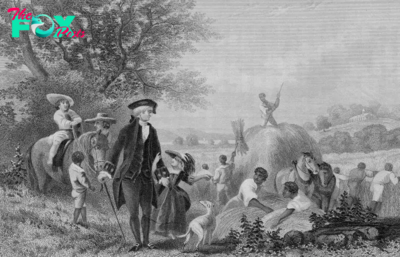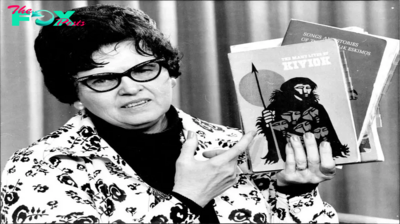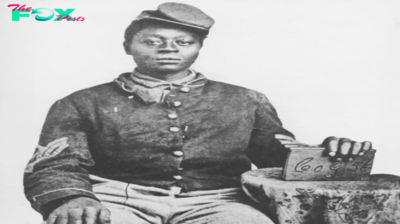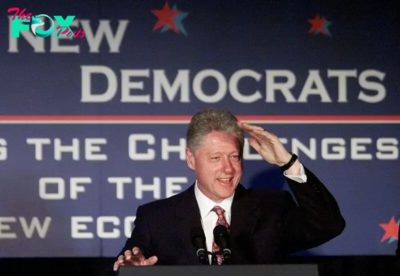History
The Biden-Trump Rematch May Mark the End of an Era
The results of the recent primaries confirmed what Americans long expected (and many dreaded): the 2024 presidential election will feature a second contest between Joe Biden and Donald Trump. The rematch between current and former presidents has caused much disappointment, even despair, among the electorate. Few Americans seem excited by the prospect, and many question why a nation of more than 300 million people cannot produce more exciting candidates than two elderly retreads.
This rerun, however, might prove more interesting than expected. Over the course of U.S. history, presidential rematches have signaled momentous political upheavals by revealing instabilities in the electoral system and exposing tensions in the coalitions of the major parties. They tend to mark the end of an era—the last contest before major changes either in the system for selecting presidents or structure of the parties.
Today, in the midst of a significant resorting of the two major parties, with the potential for yet another disconnect between the popular vote winner and the electoral college, the 2024 rematch, like other rematches in History, may well mark the end of an era in U.S. electoral History.
The first electoral replay pitted two of the new nation’s founders against each other. Having lost to him in 1796, Thomas Jefferson defeated John Adams four years later. The historic 1800 campaign marked the first peaceful transfer of power in the nation’s short history—the first time a ruling party gave way to the loyal opposition.
Read More: July 1776 Was a Shotgun Wedding
It also led to major change in the system for selecting presidents. For even though Jefferson soundly defeated the incumbent on his second go round, an awkward electoral college tie between Jefferson and his running mate, Aaron Burr, delayed his victory and led almost immediately to the ratification of the 12th amendment. The original text of the U.S. Constitution had provided each member of the electoral college with two votes, with the leading vote-getter then becoming president and the runner up becoming vice president. After 1800, presidential electors cast votes for slates of president and vice president—the system that persists to the present day.
Another Adams, the second president’s son, figured in the next rematch. In 1828, Andrew Jackson avenged his previous defeat to John Quincy Adams (JQA). In their first contest, Jackson had tallied the most votes, but four candidates split the electoral college. Since no contender won a majority, the race went into the House of Representatives. After a deal between two of Jackson’s rivals put JQA over the top, Jackson supporters denounced what they called a “corrupt bargain” between Adams and Henry Clay, the candidate who became Adams’ Secretary of State.
Jackson easily won the rematch, but in 1828, both the established method for nominating candidates and the party system fell apart. Previously, congressional caucuses, a party’s members in the Congress, had selected nominees for the Democratic-Republican and Federalist parties. When the Federalists broke down in the late 1810s, congressional caucuses still nominated candidates for rival factions of the Democratic-Republicans. The Adams-Jackson rematch marked the last gasp of that era without a formal nominating process. Four years later, the parties officially replaced the fading congressional caucuses with national nominating conventions and solidified the so-called “second party system” of competition between the Democratic Party (the Jacksonians) and their rivals (eventually known as the Whigs).
While the names of the major parties would change, the Jackson-Adams rematch of 1828 ushered in the party era in national Politics—a century dominated by party organizations and their bosses. During that period, partisan loyalties affected far more than voting behavior in November. It defined many Americans’ social lives: Workingmen gathered in party headquarters to drink, smoke, and socialize; political machines helped out families in times of need; religion, region, and ethnicity largely determined party attachments.
Read More: John Adams Lost His Re-Election. How He Responded Set a Precedent That's Been Followed for More Than 200 Years
Elections revolved less around issues or personalities, more around getting your party’s loyal army of voters to the polls. After all, before the adoption of modern ballots in the 1890s, voting involved walking up to your party’s precinct captain, getting a printed ballot with the full party ticket, and stuffing it in the box. There were no booths, no curtains, and no opportunities to split tickets between candidates of different parties.
Amid that party era came the contest most resembling the Trump-Biden rematch. The year 1892 pitted former president Grover Cleveland (D-NY) against the man who had beaten him, incumbent president Benjamin Harrison (R-IN). In their first go-round, amid charges that Republican allies of Harrison had committed widespread fraud, Harrison triumphed, even though Cleveland won the popular vote. Cleveland won round two, becoming (as yet) the only person to return to the White House after losing the office.
But the Harrison-Cleveland rematch also led to major changes. After three consecutive popular vote losses, Republican leaders realized they could no longer rely on their loyal army of regular voters. In the next campaign, they appealed to traditionally Democratic constituencies, sent out campaign literature in dozens of languages, raised millions of dollars from private donors, and reached out to interest groups. Their “campaign of information” heralded a new kind of Politics centered less on party and more on candidates.
The Democrats changed too. Seeing that the “People’s Party” representing radical farmers had won five Western states in 1892, the party embraced much of the Populist agenda four years later.
The next rematch came in 1956, when former Illinois Governor Adlai Stevenson took a second shot at Dwight D. Eisenhower amid a dramatic transformation in the communications landscape. In 1948, only 3% of American homes had television sets; by the time of the Stevenson-Eisenhower rematch, 80% were equipped with TV, an instrument that was permanently altering the nation’s entertainment preferences and habits of acquiring information.
The onset of new media like film and radio, and the political entry of advertising executives and celebrity surrogates, had begun to erode the influence of local party organizations and their bosses in the early 20th century. But none of them would have the immediate influence of television in the 1950s. President Eisenhower embraced the new medium and its potential for direct communication. He even appointed Hollywood director and actor Robert Montgomery to be his media advisor and took instruction on how best to use TV cameras.
Stevenson, a true intellectual brilliant at formal speechmaking, despised the new medium and disparaged it. “The idea that you can merchandise candidates for high office like breakfast cereal is,” he complained, “I think, the ultimate indignity to the democratic process.” While Eisenhower made short, snappy spots with catchy jingles, even using animated cartoons, Stevenson produced ponderous campaign films—TV ads that attacked TV! That would never happen again.
After Stevenson’s second defeat, his Democratic party learned its lesson and catapulted into the age of the media campaign. In 1960, Adlai remained the heartthrob of liberal Democrats; many of them, including former First Lady Eleanor Roosevelt, favored giving him a third chance. But instead, the party selected the telegenic John F. Kennedy, whose media-centric campaign featured endorsements from celebrities, appearances with Hollywood stars, a campaign song by Frank Sinatra, and slick TV ads. The age of the modern media campaign had begun.
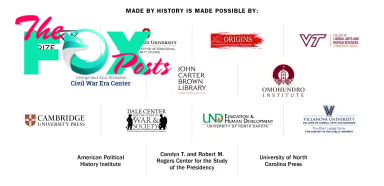
Like those previous rematches, the 2024 campaign seems like a holding action, the last gasp of a crumbling political order. If Biden prevails, he would not only deal Republicans their sixth defeat in nine national elections, but expose a party that won a majority of the popular vote only once since 1992. That might lead to a shakeup. If Trump regains the White House (likely by winning the electoral vote without a popular majority), it would both intensify pressure to reform the electoral college and force a reckoning in a Democratic Party unable to capture the support of working-class Americans.
If past presidential rematches offer any guide, the second Biden-Trump campaign will produce momentous change in American Politics. It certainly won’t be boring.
Bruce J. Schulman is the William E. Huntington Professor of History at Boston University.
Made by History takes readers beyond the headlines with articles written and edited by professional historians. Learn more about Made by History at TIME here. Opinions expressed do not necessarily reflect the views of TIME editors.
-

 History1w ago
History1w agoWhy People Should Stop Comparing the U.S. to Weimar Germany
-

 History1w ago
History1w agoFlorida’s History Shows That Crossing Voters on Abortion Has Consequences
-

 History1w ago
History1w agoThe 1994 Campaign that Anticipated Trump’s Immigration Stance
-
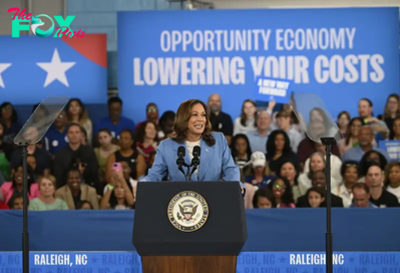
 History2w ago
History2w agoThe Kamala Harris ‘Opportunity Agenda for Black Men’ Might Be Good Politics, But History Reveals It Has Flaws
-
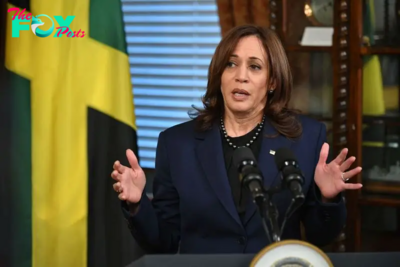
 History2w ago
History2w agoLegacies of Slavery Across the Americas Still Shape Our Politics
-

 History2w ago
History2w agoKamala Harris Is Dressing for the Presidency
-

 History2w ago
History2w agoWhat Melania Trump’s Decision to Speak Out on Abortion Says About the GOP
-

 History2w ago
History2w agoThe Long Global History of Ghosts
